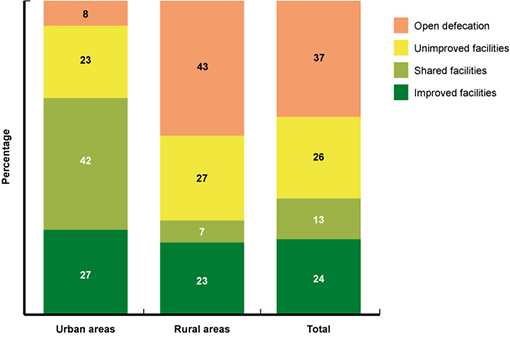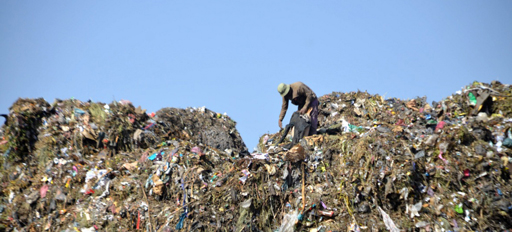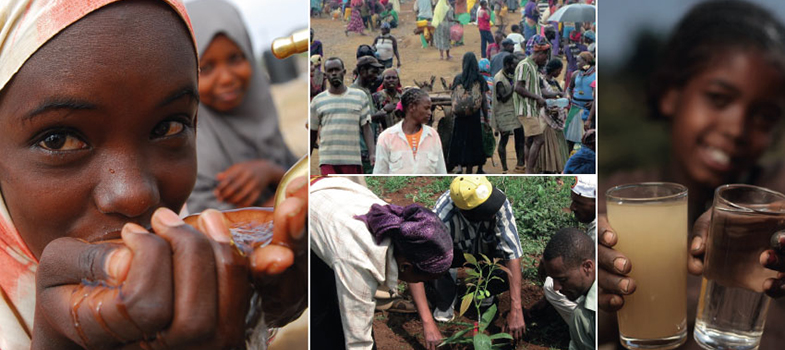1.5 The present state of sanitation in Ethiopia
The WHO/UNICEF Joint Monitoring Programme (JMP) collects and publishes data for water supply and sanitation for all the countries of the world. The JMP data for sanitation coverage in Ethiopia in 2012 is shown in Figure 1.7.

There has been a marked reduction in the practice of open defecation throughout Ethiopia in recent years, particularly in rural areas. This has been accompanied by a rise in the use of latrine facilities, but there is still a long way to go to eliminate open defecation and provide all people with access to improved facilities.
There is far less information available on solid waste management in Ethiopia than there is on sanitation. Outside Addis Ababa and other large cities, household waste is not collected and people tend to dispose of their waste in informal ‘open dumpsites’ where no records are kept. Organic materials (e.g. food, paper) eventually decompose, but other materials such as plastics accumulate or are blown around by the wind. Not surprisingly, there are no reliable figures for the amount of waste produced outside the main cities. In Addis Ababa, Basha (2007) estimated that around 2000 tons of waste were generated each day, around 75% of which was residential waste. Of this total:
- around 50–60% was collected by the city authority and taken to a local disposal site (Figure 1.8)
- 5–10% was recycled
- the remainder was either burned in open fires or dumped in open spaces, in watercourses or by the roadside.
Clearly, there is much progress to be made in collecting city waste and in finding a safe way of disposing of it.

1.4.4 Challenges to administration
